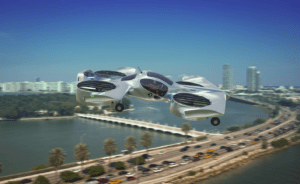[ad_1]
 As eVTOL companies announce funding raises and airworthiness certificates, how far away is commercialization?
As eVTOL companies announce funding raises and airworthiness certificates, how far away is commercialization?
Doroni Aerospace wants to change the future of commuting. As the Doroni H1 eVTOL receives an FAA Special Airworthiness Certificate, the company moves a step closer to realizing that goal. Doroni Aerospace performed their first manned aircraft flight last summer, and announced this week that the has received the Special Airworthiness Certification from the Federal Aviation Administration (FAA) for its eVTOL aircraft, the Doroni H1. This certification indicates that the Doroni H1 meets all necessary safety requirements for operations and can operate safely and dependably in different flight conditions.
The airworthiness certificate is a significant milestone. Doroni joins early eVTOL players including Joby, Lilium, eHang, Archer, Supernal and others in their efforts to capitalize on a market that Morgan Stanley Research predicts will surpass $1 trillion by 2040. Doroni has announced that the company is taking a staged integration approach, starting with operations similar to helicopters – a move that could see an early path to commercialization.
Despite the excitement surrounding eVTOL and advanced air mobility – including the FAA’s roadmap, which should see at least some eVTOL on display during the 2028 Olympics, scheduled to be held in Los Angeles – is commercialization close?
The Challenges to eVTOL Commercialization
While the eVTOL space has seen many entrants over the last several years, significant challenges remain to be overcome before passenger eVTOLs become commercially viable. Infrastructure – not only vertipads, but air traffic management – is still under development. Regulations have not yet been solidified. Propulsion technology is still evolving. Production challenges are significant, to ensure that eVTOL systems are not only safe but efficient and relatively inexpensive. Years of research and effort has gone into addressing each of these challenges and others – but more remains to be done. These issues cannot be solved by a single party, but require global collaboration between technology companies and regulators.
These obstacles are not insurmountable, but they do mean that most consumers won’t be hopping into a passenger eVTOL any time soon. As with any new technology, eVTOLs represent a significant change in transportation infrastructure – and change takes time, sometimes a long time, to implement. A pessimist might point out that the first autonomous car traveled coast-to-coast in the U.S. in 1995: nearly 30 years later, we’re still in the test phases of the technology. (Should you wonder, the first all-electric cars were produced in the late 1800’s, almost 100 years before Elon Musk was born.) More optimistically, the clear advantages of eVTOL – low noise, zero emissions, the potential for better cost efficiency – may help drive adoption forward.
[ad_2]

